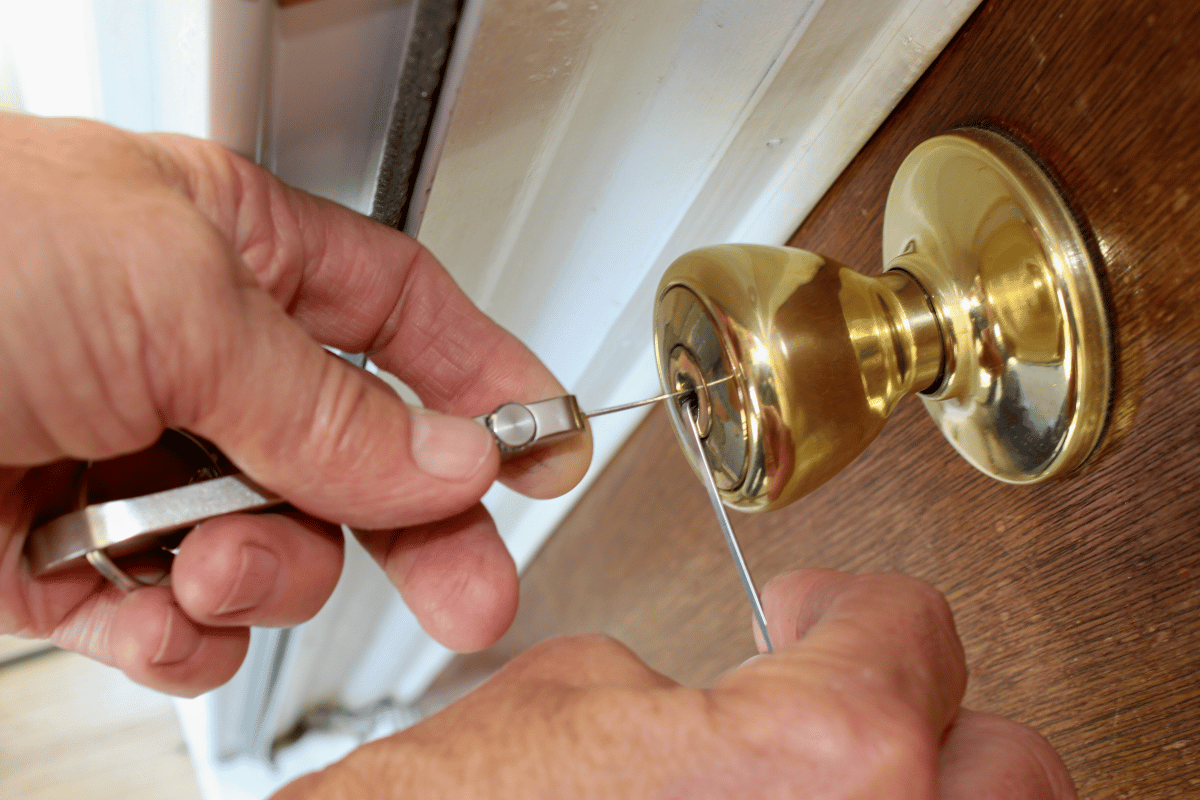Have you ever found yourself locked out of a room, rummaging through your wallet for something to help? Interestingly, one of the items you carry daily might just be the solution: a card. Whether it’s a credit card, a loyalty card, or something similar, with the right technique, you can use it to unlock a door. In this guide, we’ll explore how to pick a lock with a card, incorporating a detailed table to help you understand the process better. Also, we’ll answer some frequently asked questions related to lock-picking with a card. Remember, this knowledge should be used responsibly and never for illegal purposes.
Understanding the Mechanics
Before diving into the technique, it’s crucial to understand that this method works best on spring bolt locks, commonly found in internal doors. Deadbolts or more complex locking mechanisms are not susceptible to this technique. The principle is to push the slanted latch of the lock back into the door to open it.
Required Materials
- A sturdy card: Preferably one you don’t mind damaging, as the process might bend or break the card.
- A little patience: This technique might require several attempts, especially if you’re a beginner.
Step-by-Step Guide
- Choose Your Card: A flexible yet sturdy card works best. Think of a loyalty card or a supermarket membership card.
- Insert the Card: Slide the card between the door and the frame, just above the lock.
- Find the Latch: Tilt the card so it’s almost touching the doorknob. This is typically where the latch is located.
- Push and Wiggle: Push the card further, applying a bit of downward pressure. Wiggle it back and forth to slide the latch in.
- Open the Door: Once the latch slides in, turn the doorknob and open the door.
Lock Picking with a Card
| Step | Action | Tip |
|---|---|---|
| 1 | Select a suitable card. | Thicker cards offer more force but might not be as flexible. |
| 2 | Insert the card between the door and the frame. | Start above the lock for better leverage. |
| 3 | Tilt the card towards the doorknob. | This aligns it with the latch. |
| 4 | Wiggle the card while pushing down. | This helps in catching the latch. |
| 5 | Apply pressure until the latch slides in. | Be gentle to avoid damaging the card. |
| 6 | Turn the doorknob and open the door. | Celebrate your success! |
Frequently Asked Questions
Can this method damage the door or lock?
Yes, it can. Although this method is generally non-invasive, improper use of the card or excessive force can damage the paint, the door, or the lock mechanism itself.
Is it legal to pick a lock with a card?
It depends on the context. Using this technique on a lock you own or have permission to open is usually fine. However, using it without permission can be considered breaking and entering, which is illegal.
What types of cards are best for picking locks?
Flexible yet sturdy cards work best. Membership or loyalty cards are ideal as they’re usually made of durable plastic that can withstand bending.
What types of locks can be picked with a card?
Spring bolt locks are most susceptible. These are typically found on internal doors. Deadbolts and more complex locks are resistant to this method.
Conclusion
While picking a lock with a card can be a handy skill, especially in lockout situations, it’s important to use this knowledge ethically and legally. This method is best suited for simple spring bolt locks and might not work on more secure locking mechanisms. If you find yourself facing a lock that can’t be opened with a card, or if you’re uncomfortable attempting this technique, professional help is always the best option.
At NonStop Locksmith in Kansas City, we offer a wide range of locksmith services tailored to your needs. Whether you need assistance with your car, motorcycle, home, or business, our team of experts is ready to help. We also serve various areas including Lee’s Summit, Waldo, North Kansas City, Lenexa, and Belton, ensuring fast and reliable service. For more information or to request service, please don’t hesitate to contact us. Your security is our top priority.


